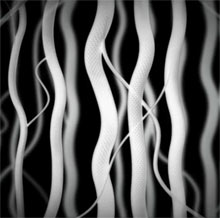 It may look like spaghetti, but Carbon-nanotube ribbons developed by researchers at the University of Texas at Dallas are stronger than steel, as stretchy as rubber, and as light as air. The ribbons, which are made of long, entangled 11-nanometer-thick nanotubes, can stretch to more than three times their normal width but are stiffer and stronger than steel or Mylar lengthways. They can expand and contract thousands of times and withstand temperatures ranging from -190 to over 1,600 °C. What's more, they are almost as light as air, and are transparent, conductive, and flexible.
Click on the pic to check out the full story.
 The world's first flying car - the Terrafugia Transition took to the skies this week for its maiden voyage, following six months of road tests and years of design. The goal is to create an airplane that can be driven to and from a runway and parked in the family garage at night.
The Transition runs on regular unleaded gasoline and can travel up to 500 miles on a single tank of gas. It takes less than 30 seconds for the vehicle's wings to fold up or extend to transform from plane to car or vice-versa.
Information from the test flight will be used to tweak the Transition's design for a second prototype. The company plans to begin selling the vehicles, which cost $194,000, in 2010, said Richard Gersh, Terrafugia's vice president of business development.
The company has taken deposits for 40 vehicles already, Deitrich said.
That's right, a flying car could soon be in circulation meaning we can add a new addition to road rage: sky fury.
Find out more about the Terrafugia Transition Flying Car by going here.
View more pictures here.
WASHINGTON: Scientists have come up with a new type of glass from opaque titanium and zirconium, which is harder, tougher and weighs less than stainless steel. According to a report in Discovery News, the glass has been developed by scientists at the Lawrence Berkeley National Laboratory, California, US. The experts who developed and tested the opaque glass hope it could one day replace steel and aluminum in a variety of products, from golf clubs to airplanes.
“The problem with most (types of) glass is that they have very bad fatigue resistance,” meaning they break easily, said Maximilien Launey, a scientist at the Lawrence Berkeley National Laboratory. “What we’ve done is introduce a second phase that is able to improve the fatigue resistance. Now, it’s as good as other high-strength alloys like steel,” he added.
To create the tough, metallic glass, the scientists first heat an alloy of half titanium and half zirconium to 800°C until melt. The liquid metal is allowed to cool slowly for a minute or two, and then cooled very rapidly after that.
By cooling slowly and then quickly, the scientists allowed tiny Christmas tree-like crystalline structures to grow through the metal. Rapidly cooling the rest of the metal maintains the glassy atomic structure.
The crystalline structures stop any cracks that from moving more than two to five microns in length. The glass gives the material its strength, while the Christmas tree-structures give it toughness. In subsequent stress tests, the 1 to 10-centimeter pieces of glass were dramatically tougher than any previous metallic glass, a full order of magnitude more resistant to breaking and stronger than steel.
Since the alloy is titanium and zirconium instead of steel, it weighs significantly less than steel. It also melts at much lower temperatures than steel, making it easier and faster to produce. It also melts at much lower temperatures than steel, making it easier and faster to produce. “We could make an airplane out of metallic glass,” said Launey.
A new global arms race is escalating: the one to protect us from the mosquito, the carriers of Malaria, a deadly parasite that kills around one million people annually.
Rocket scientists are now using lasers to target flying mosquitoes with deadly accuracy.
Check out this link to see more Weapons of Mosquito Destruction!
If you're someone who has longed to see the Aurora Borealis (Northern Lights), there's a website that can help. You don't have to travel to the Arctic Circle to see the mysterious ribbons of light - they can be seen (occasionally) as far south as northern Europe. You just need to know when - and where - to look.
Thankfully, Aurora Watch has the answer. They monitor for solar activity and can even point you in the right direction to see this elusive phenomenon.
Visit the website
Click here to see more stunning aurorae pictures.
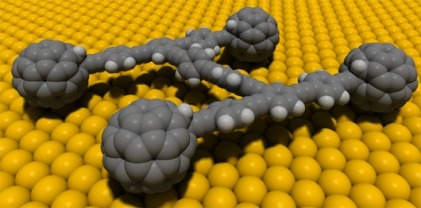 This image might look like a bunch of Lego for the new millennium, but it is in fact a model of a ‘nanocar’.
The clustered molecules can roll around on a glass slide at about nine nanomiles per hour (translated: really slow), and its wheels actually turn.
The nanocar is no more than 4 nanometers (translated: tiny) across, which is slightly wider than a strand of DNA (any clearer? Nope, we thought not).
Nanovehicles like these are designed to study the materials and movements, to make it easier for researchers to build more sophisticated molecular machines. Eventually the researchers want to build tiny trucks that could carry atoms and molecules around in miniature factories. So in the future, we could have tiny ambulances racing through our veins instead of antibiotics.
Click on the pic for the full story.
Sound like sci-fi? You betcha. Watch this space for more on nanocars.
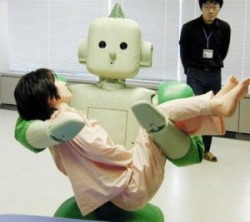 Muckflash reports on the Japanese fascination with artificial intelligence, this time focused on the emotion of love.
Must Kill. Must Kill! Researchers at Toshiba’s Akimu Robotic Research Institute were thrilled when they successfully programmed Kenji, a third generation humanoid robot, to convincingly emulate certain human emotions. Now, they fear that his programming has taken an extreme turn for the worst for Kenji displays outrageous affection toward the daily object of his desires.
Crushy Crushy Ten Dollar: The trouble started when a young female intern began to spend several hours each day with Kenji, testing his systems and loading new software routines. When it came time to leave one evening, Kenji refused to let her out of his lab enclosure and used his bulky mechanical body to block her exit and hug her repeatedly. The intern was only able to escape after she had frantically phoned two senior staff members to come and temporarily de-activate Kenji.
Check out the picture for more details of this story of robot love gone mad.
The Mail Online today reveals the revolutionary proton therapy which can target cancerous tumours with incredible accuracy. Finally, a non-invasive cancer treatment that doesn't have a thousand side effects.
It's all very sci-fi with a machine that looks like something out of the Large Hadron Collider zapping particles at your brain.
Check it out.
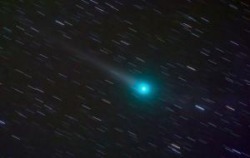 Comet Lulin will be at its closest path to Earth in the next few days, and you can see it in the southern skies with a good pair of binoculars just after midnight (hopefully, it'll be visible to the naked eye).
The Independent.co.uk website as a great piece on finding this unique stellar phenomenon. But be warned: it's pretty far away and might not be particularly awe-inspiring to look at.
Go here to find a simple map of how to find Lulin in the night sky.
The Hubble Space Telescope has imaged striking details of the famed planetary nebula designated NGC 2818, which lies in the southern constellation of Pyxis (the Compass). The spectacular structure of the planetary nebula contains the outer layers of a star that were expelled into interstellar space.
Click on the image below to get a high res image of the nebula.
The glowing gaseous shrouds in the nebula were shed by the central star after it ran out of fuel to sustain the nuclear reactions in its core. Our own sun will undergo a similar process, but not for another 5 billion years or so. Planetary nebulae fade gradually over tens of thousands of years. The hot, remnant stellar core of NGC 2818 will eventually cool off for billions of years as a white dwarf.
This Hubble image was taken in November 2008 with the Wide Field Planetary Camera 2. The colors in the image represent a range of emissions coming from the clouds of the nebula: red represents nitrogen, green represents hydrogen, and blue represents oxygen.
You can go to the Hubble website to see more wonderful images of space by clicking here.
|


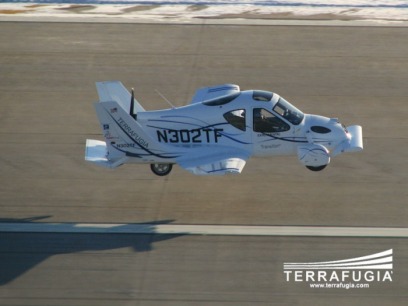
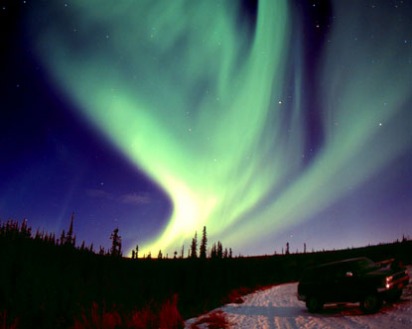



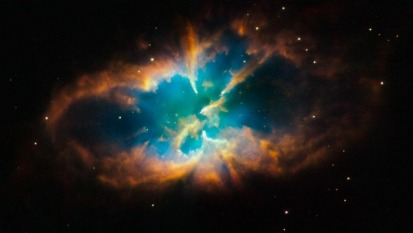
 RSS Feed
RSS Feed